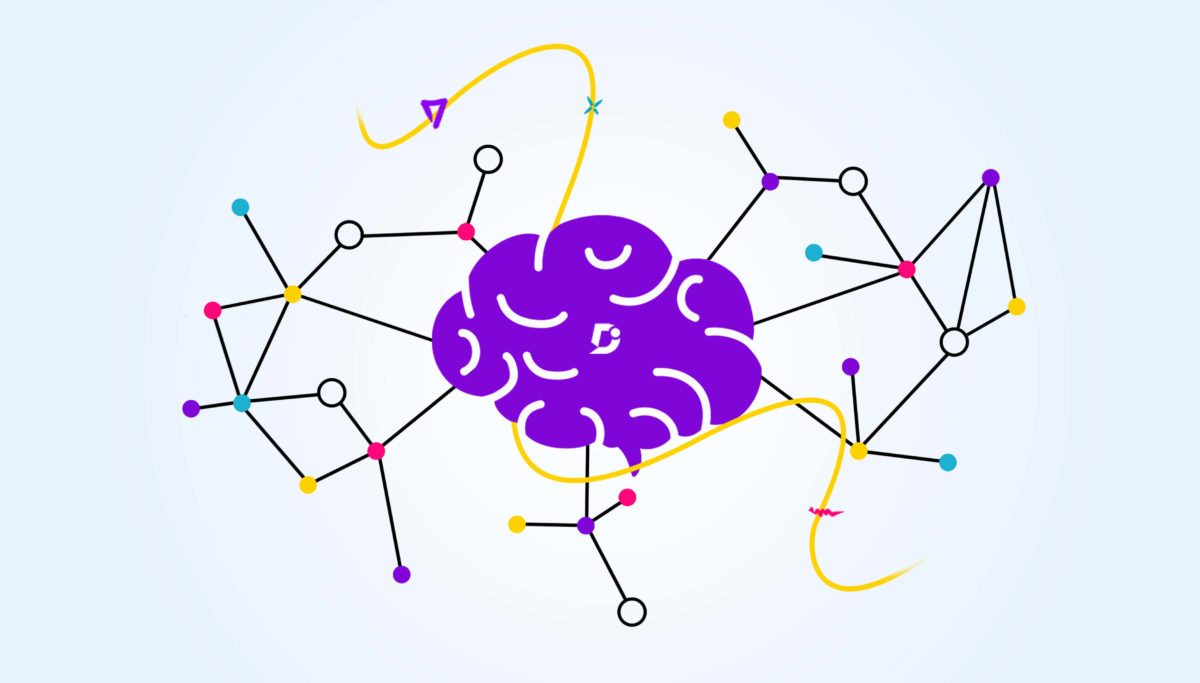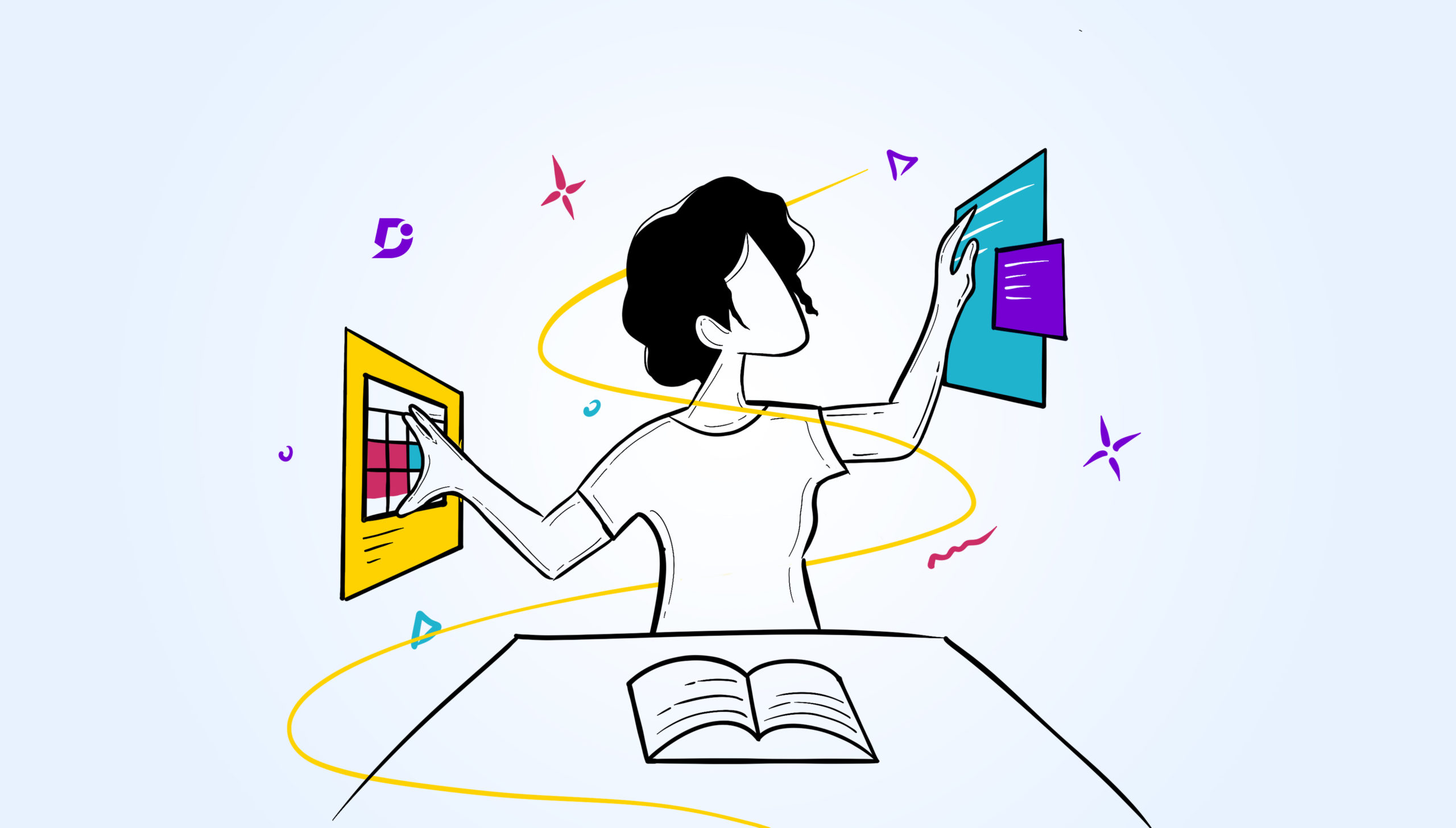Knowledge assets are crucial to business performance and can make the difference between success and failure in your projects. Knowledge makes a competitive difference and allows your business to outperform your rivals.
Creating knowledge isn’t enough when it comes to Knowledge Management – your employees need to be able to easily find out what you know. Without knowledge discovery, you risk wasting time and money on creating the same knowledge over again.
Wouldn’t it be great if your business had a map that shows exactly what knowledge you have and paves the way to finding the correct knowledge? That’s where knowledge mapping comes into play.
Definition of knowledge maps
Knowledge maps are a visual representation of an organization’s knowledge assets. It allows you to identify gaps in your knowledge and assists with knowledge flow. Employees can pinpoint where critical knowledge is, and see how it flows across your organization along with any gaps in your knowledge.
Knowledge mapping is best suited to businesses who want to improve their knowledge management capabilities and accelerate knowledge sharing and transfer across the organization. Knowledge maps don’t actually store the knowledge of a business – it just shows you where to find it.
Knowledge mapping allows you to:
- Discover and sort knowledge assets. Knowledge assets can be tacit, such as an employee’s knowledge of a process, or it could be explicit, such as a project report.
Locate your knowledge assets. That knowledge could be part of your IT infrastructure, or held within a person or team. - Connect together all of your knowledge assets in a visual way. It’s easy to see what knowledge your company has as well as what is lacking.
The advantages of knowledge mapping
There are many advantages you can expect to benefit from when implementing knowledge mapping.
-
- Improved knowledge retention. Employees become co-creators of knowledge and take an active role in documenting their knowledge for the benefit of everyone else. Even if key employees leave the organization, you retain their knowledge for the future.
- Curate an experience for employees when it comes to accessing collective knowledge. It’s easy to access the intellectual capital of a company when knowledge assets are in a knowledge map.
- Makes knowledge centered support possible. Employees can locate the correct knowledge more quickly with a knowledge map, allowing them to answer internal and external support requests more quickly.
- Discover undocumented knowledge. Knowledge mapping shows where you have missing knowledge in an area. You can identify weak spots and areas where you need to transform tacit into explicit knowledge.
- Facilitate cooperation between teams. It’s easier to share knowledge and transfer between teams when you can visually see what other teams know. This reduces knowledge silos and saves on duplicating effort.
- Allows employees to find new knowledge. Knowledge maps are intuitive and they showcase knowledge assets. This means employees can navigate to different parts of the map and discover new assets and maps in the process.
An intuitive internal knowledge base software to easily add your content and integrate it with any application. Give Document360 a try!
Get Started
How to create a knowledge map
We’ll now look at the steps you need to go through when creating your knowledge maps.
1. Outline your plan
You shouldn’t just blindly jump into creating your knowledge maps straight away. It helps to define knowledge mapping within the context of your Knowledge Management strategy in order to create the most effective maps.
Ask yourself:
What would you like to achieve with knowledge mapping? What are the aims you have in mind?
Where does knowledge mapping fit into your overall Knowledge Management strategy?
Who will take point on the knowledge mapping process? Who will be accountable for keeping the knowledge maps up-to-date?
What are the necessary tools for knowledge mapping? Eg: Knowledge mapping software is crucial.
2. Analyze the important procedures in your business
You need to review your business functions to decide what would make appropriate material for knowledge mapping.
Not every area of the business will be suitable for knowledge mapping. Make a list of topics that you think would make a good knowledge map. Ask leaders and managers what knowledge their employees need to get work done in their areas to find out who you need to talk to when creating your knowledge maps.
3. Choose your knowledge mapping topic
Meet with your team and choose the knowledge mapping topic you want to create. You can use a specialized software program to help you create your knowledge map, so you might want to use one of their ready-map templates to help you with this process.
If you want to document a software update, for example, then choose an appropriate knowledge map template. Choose one that will hold all the information necessary for executing a successful software update.
4. Break the topic down into the necessary steps
After you’ve identified the process you want to map, you need to list all the steps within the process as these will form part of your knowledge map. Work with knowledgeable team members to make sure you don’t miss any steps.
The knowledge map should be created using nodes that represent each step in the process. Knowledge mapping software allows you to easily create knowledge maps representing the knowledge held within your business. This is the stage where you actually create your knowledge map.
You might be creating a knowledge map on how to launch a new software update. You’ll need to include knowledge relating to updating support documentation, educating support staff on new features, and beta-testing the software. These should all be included in your knowledge map.
5. Decide what knowledge assets are needed
Once you’ve identified all the relevant steps in your knowledge map process and actually created your knowledge map, you need to collect the knowledge assets that relate to each node. Most organizations will have many resources at their disposal so it’s important not to get lost in a sea of information.
Go through these steps:
- Highlight the core steps in your process, each represented by a node on your knowledge map.
- Work out who to speak to in order to develop your knowledge map – for example, your development team
- Attach relevant knowledge assets to your map as you uncover or create them.
Knowledge assets can come in many forms. For example:
– Images
-Spreadsheets
-Word documents
-Checklists
-Flowcharts and diagrams
-Presentation notes and slide-decks
-Articles and audio files
6. Fill in the knowledge gaps
One of the great things about a knowledge map is it helps you uncover the gaps in your knowledge. When creating your knowledge map, you were bound to find areas that hadn’t been documented.
This is your chance to turn tacit knowledge into explicit knowledge. Even if your team members do their very best to be available to answer questions, it’s still better to document their knowledge in case that employee gets sick, goes on vacation or leaves the company forever. Document their knowledge and attach it to your knowledge map where anyone can find it.
7. Store your knowledge maps in an accessible format
Many knowledge mapping software allow you to create knowledge maps that you can download as a document. Store these documents in an internal knowledge base like Document360 where anyone in the company can access them and take advantage of your knowledge maps. Make sure to collate all your knowledge assets in one folder so you can easily link to them from the knowledge map.
8. Link related knowledge maps together
Knowledge maps are bound to overlap with one another. If you have knowledge maps with related information, link between them so employees can discover new knowledge maps they otherwise might not have heard of. This is the way to facilitate true knowledge discovery in your business and is the primary purpose of knowledge mapping.
Knowledge mapping key things to remember
There are some important things to bear in mind when mapping your knowledge.
- Avoid overwhelming your map with too much information. The map is a way to signpost to knowledge assets, rather than a place to store the actual data. Link to your knowledge assets from the map so users know where to find the relevant documents.
- Keep your knowledge mapping topic succinct. This helps when deciding what assets to include. If your topic is broad, consider breaking it down into several subtopics that have their own maps.
- Work with the employees who know the topic. You don’t have to nominate someone else to be in charge of the knowledge mapping process, but you do want someone with expertise to review the topic.
Also Read: What is Tacit Knowledge: Importance, Benefits & Examples
Final remarks
Your knowledge maps have the potential to transform the way you do business and provide an invaluable resource for your employees to understand what kind of knowledge your organization holds.
Work together with subject matter experts to keep your knowledge maps up to date and useful. Keep iterating and adding new knowledge assets, since your business is never static. There will always be more knowledge to map.
An intuitive internal knowledge base software to easily add your content and integrate it with any application. Give Document360 a try!
Get Started







